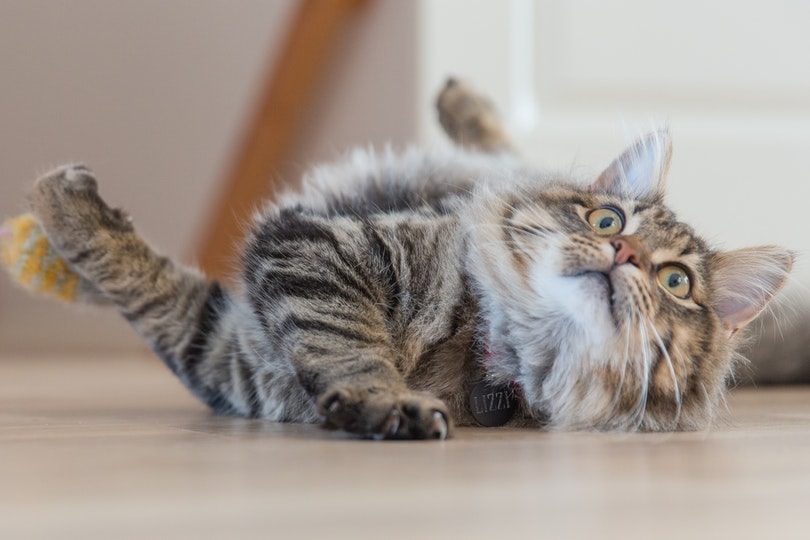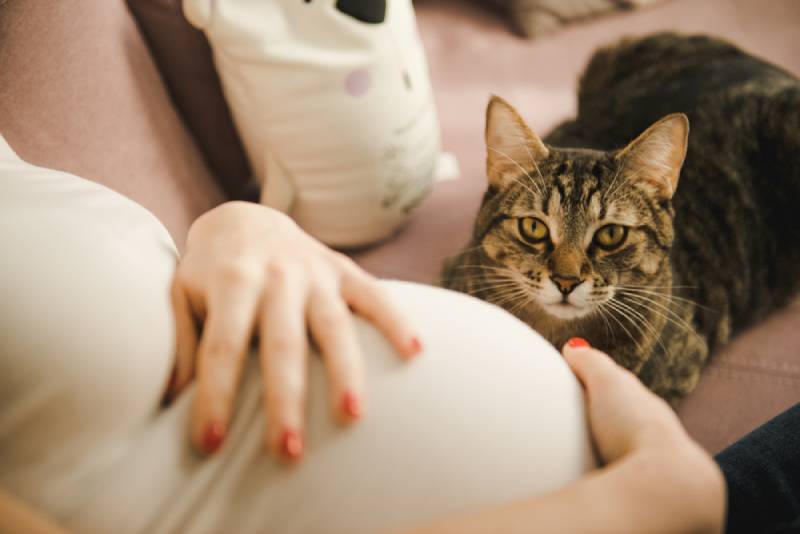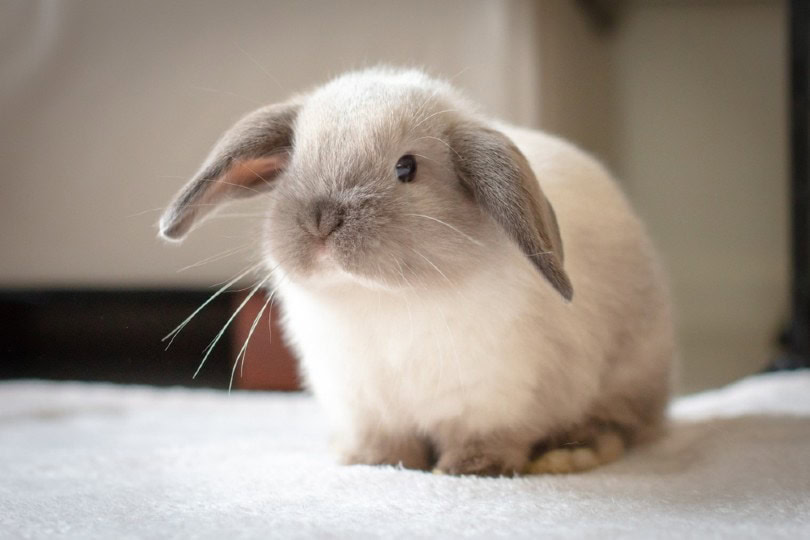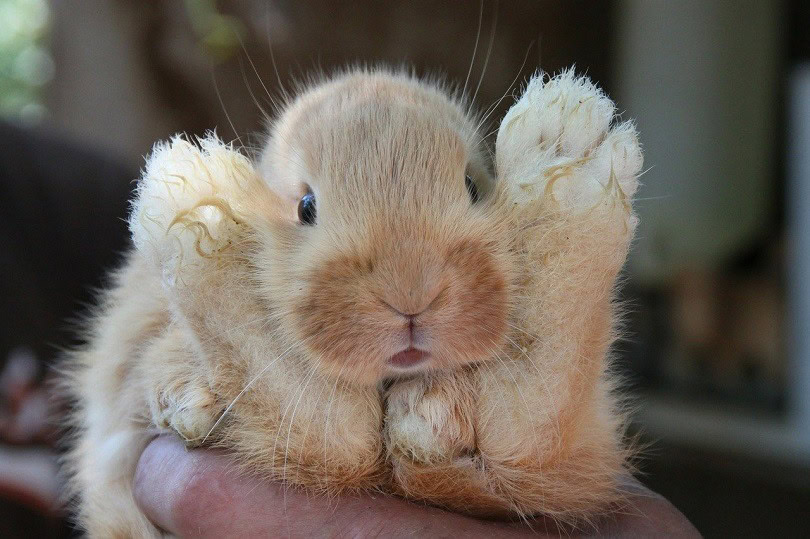VET APPROVED

The information is current and up-to-date in accordance with the latest veterinarian research.
Learn more »While adorable and lovable, cats often do strange things, including rolling around on their backs. Cats roll around on their backs when they feel safe and comfortable. It’s usually a sign your cat feels loved in your presence—particularly when lots of purring and a fair amount of head rubbing accompany the activity.
It often indicates that your cat is in the mood for some TLC. And just in case you’re wondering, when cats roll on their backs and show their tummies, it’s not a sign of submission or anxiety like it often is in dogs. Keep reading to learn why your cat may be rolling around on their back.

Top 5 Reasons Your Cat Rolls Around on Their Back
1. They’re Happy
Cats roll on their backs when they feel completely safe and content. It’s a sign they aren’t worried about much of anything and feel the environment is secure enough for them to relax and let go. It often shows that your cat is interested in interacting with you. Not all cats enjoy having their stomachs touched, even if they’re lying on their backs. Places cats enjoy being petted include behind their ears, under their chins, on their necks, and around their tail base.
Other signs that your cat is most likely blissed out are purring and head rubbing. Happy cats typically groom themselves in front of their favorite people and sometimes follow them from room to room.
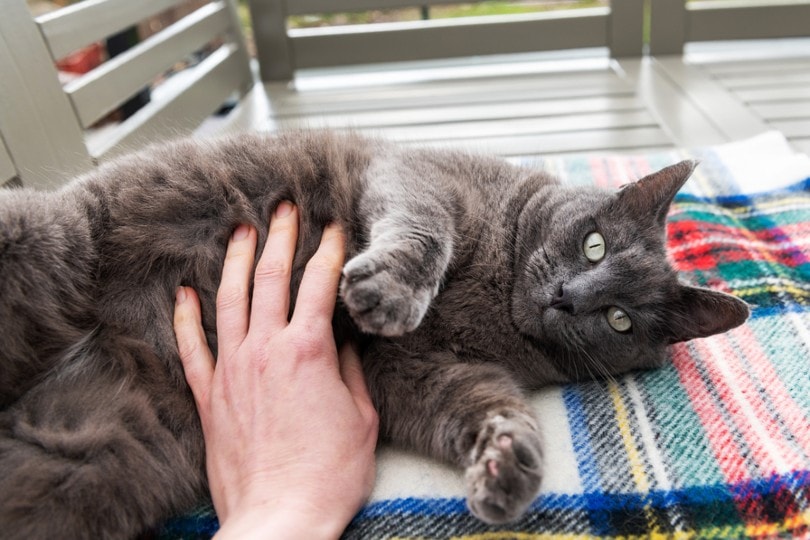
2. They’re in Heat
Female cats roll on the ground and rub against things while in heat. It’s a way of distributing their pheromones to let male cats know they’re ready to mate. Female cats in heat often yowl and become extremely affectionate. Some assume the lordosis position with their elbows bent, bottom in the air, and tail held high and off to the side.
Cats reach sexual maturity when they’re between 4 and 6 months old. They can be safely spayed or neutered when they’re around 8-12 weeks old, although the standard is between 4 and 6 months of age. Spaying cats has several health benefits, including reducing the chances of transmission of infectious disease through mating, unwanted litters, mammary tumors, or uterine infections. Neutering male cats won’t do much regarding rolling behavior, but it can reduce the likelihood of aggression, roaming, and indoor spraying.
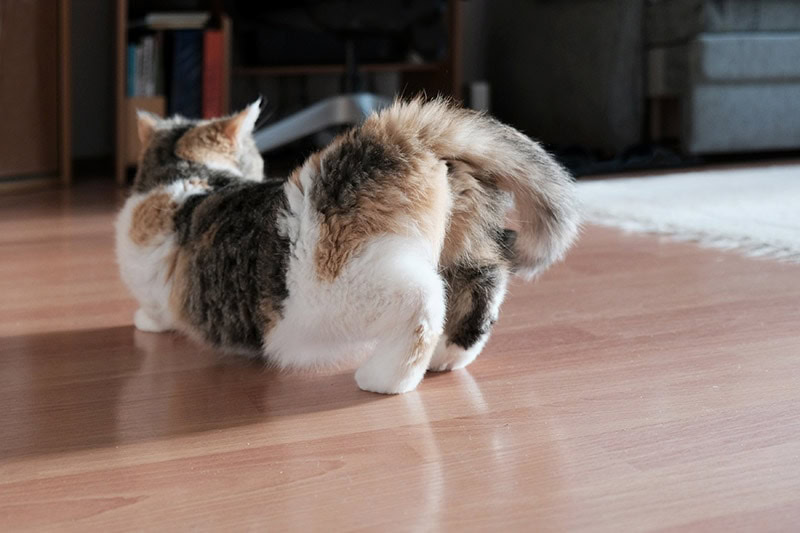
3. They’ve Had Catnip
Sniffing catnip is a favorite activity for many cats, and those who react to catnip often love rolling around in it! Catnip features some of the same compounds that trigger reproductive behavior in cats, which may explain why some pets react to the herb by rolling around on the ground (like queens in heat).
Contrary to popular belief, not all cats enjoy catnip; around 40% don’t react to it. Silver Vine is often a good alternative for cats that don’t respond to catnip. The effects of catnip usually last for around 10 minutes or so, and while it’s not addictive, it does lose effectiveness quickly. Kittens often don’t react to catnip until they’re 6 months to 1 year old. There are a few different ways to treat your buddy to catnip-induced fun, including fresh and dried options.
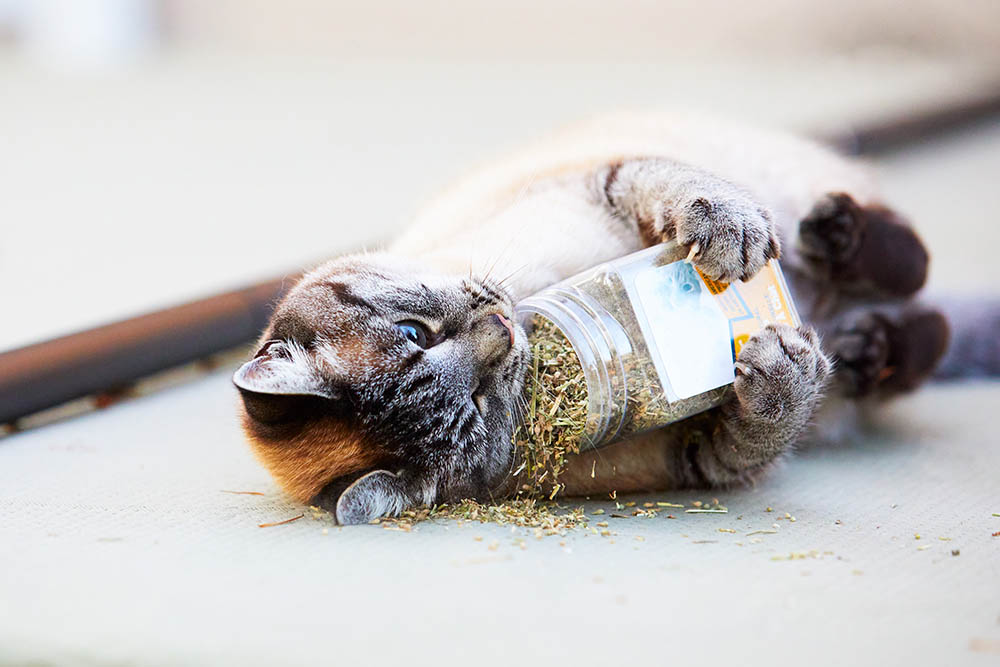
4. They’re Marking
Cats have outstanding noses and rely on smell to identify people, locations, and other cats. They can smell around 14 times better than people, thanks to the millions of scent receptors in their noses. They also have a second scent organ dedicated to picking up pheromones, the vomeronasal or Jacobson’s organ. Cats have scent-producing glands around their whiskers and cheeks, in front of their ears and forehead, on the base of the tail, around the anus, and between their toes.
When they roll around on the ground, they’re distributing their scent, which then provides a sense of familiarity and comfort. When cats knead or make biscuits, they do the same thing by spreading their pheromones around, which they associate with feeling loved and secure. However, cats can mark in several other ways, including by scratching and spraying.
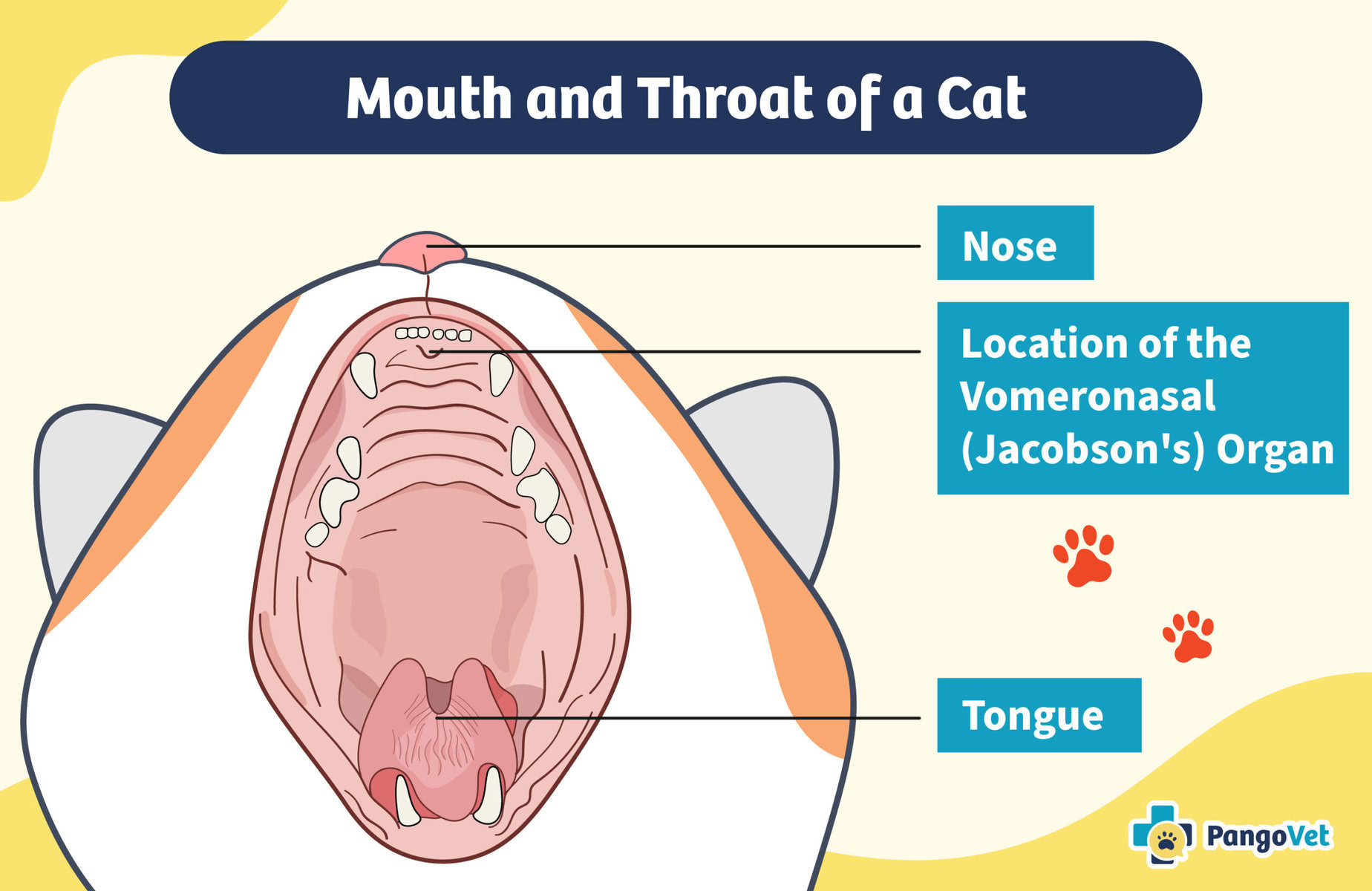
5. They’re Scratching an Itch
Cats sometimes roll on the ground when attempting to scratch an itch they can’t quite get to. If your cat is completely relaxed on their back, there’s likely nothing to worry about. But if your pet suddenly starts rolling and wiggling back and forth, or they are scratching themselves excessively, they may be suffering from itchy skin. Itchy skin in cats can have several causes, from allergies to infections. It’s best to take your cat to the veterinarian for an examination to prevent an allergy or infection from worsening.

Final Thoughts
Cats usually roll on their backs when they’re happy and content. It almost always indicates that your cat feels safe and secure. Cats purr and rub their heads when rolling, which often shows cats are in the mood for loving interactions. But keep in mind that not all cats enjoy having their stomachs petted. Many prefer to be petted behind their ears and around their neck and back. If your cat seems agitated when rolling on their back, you can take them to the veterinarian to ensure they’re not suffering from a skin condition or allergy.
- Itching (Pruritus) in Cats – Cat Owners – MSD Veterinary Manual
- What Is Catnip and What Does It Do to Cats? | PetMD
- Estrous Cycles in Cats | VCA Canada Animal Hospitals
- Allergies in Cats | VCA Animal Hospitals
- Is There an Optimal Age for Cat Spay or Neuter?
- Active and passive responses to catnip (Nepeta cataria) are affected by age, sex and early gonadectomy in male and female cats – ScienceDirect
- Responsiveness of cats (Felidae) to silver vine (Actinidia polygama), Tatarian honeysuckle (Lonicera tatarica), valerian (Valeriana officinalis) and catnip (Nepeta cataria) | BMC Veterinary Research
Featured Image Credit: Inge Wallumrød, Pexels
